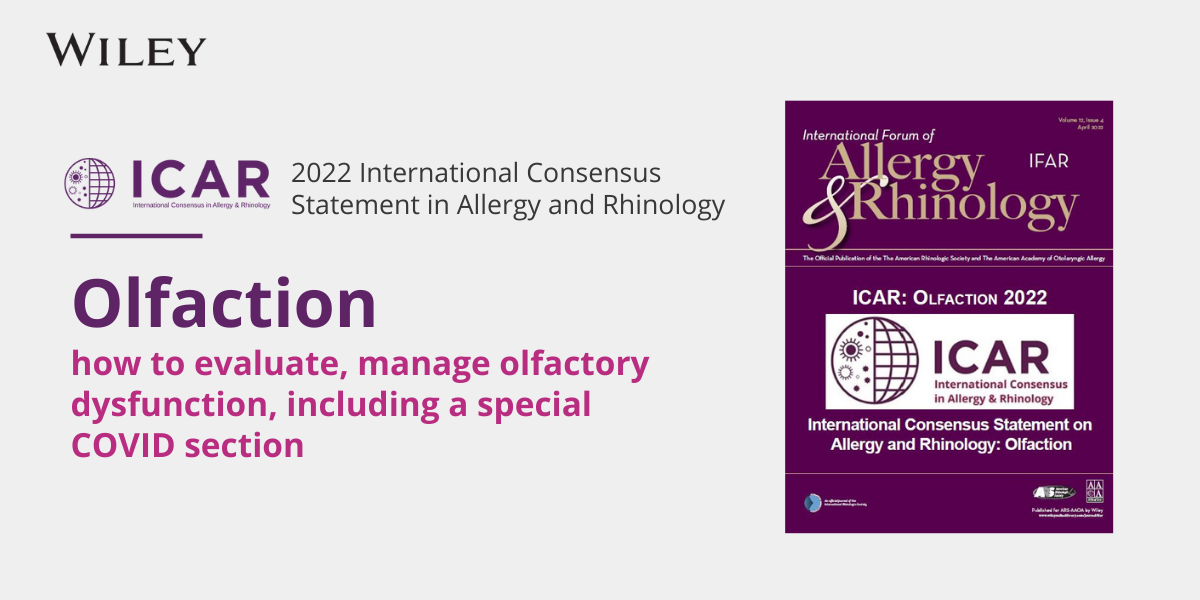Still deciding whether to register for the upcoming Explorers Course 2026?Take a moment to watch these highlights shared by attendees from the previous course.Their firsthand experiences offer valuable insight — and demonstrate why the Explorers Course 2026 is one you…
The Secret Ingredients
By William Reisacher, MD, FAAOA
Most people have heard about food allergies, or even know someone who had to run to the ER after eating a peanut or a shrimp. We have seen that food allergies on the rise, cost the healthcare industry billions of dollars, and have a major impact on the emotional well-being of people who have food allergies and those who love them. But many of us are less aware that allergic and inflammatory reactions can occur from the additives that are in our food as well.
If you have ever stopped to read the ingredients on a box of food in the supermarket, you might recognize the feeling that something is not quite right here. An item that should have just a few ingredients has a list of 10-20, many of which you would need advanced-level education in chemistry to understand, no less pronounce. And if you look carefully, many of these additives are also in our medications and cosmetics. Why are all these extra things in our food?
Many of these chemicals are added to make our food more tantalizing for us to buy, feed our families, or just consume quickly under a table before anyone else can find us. They add vibrant color, enhance the flavor, and provide a texture that is more pleasing to us. They also allow the food to sit on the shelf longer before spoiling, or provide extra nutrients such as vitamins and antioxidants, which have been suggested as protective against certain cancers.
The regulatory agencies in many countries have issued statements on how many of these chemical additives can exist in our food supply, but unfortunately those numbers are not very precise and vary widely based on the country. What is clear, however, is that the number of them finding their way into our foods is on the rise. From 2001 to 2019, it is estimated that the number of food additives rose 10% in general and a whopping 22% in baby food! [1] It has also been estimated that about 60% of foods purchased by Americans contain food additives. [1,2]
It sounds like most, if not all, of these additives are designed to help us and make our food more edible. So, what is the downside of having more of them there, and in larger amounts? Well, many people can be overly sensitive to those chemicals in the body and they can trigger allergic, inflammatory, or just undesirable reactions. While self-reported “hypersensitivity” in the general population is estimated to be less than 10%, the numbers can rise as high as 25% in people who already suffer from inflammatory reactions, like food allergy and asthma. [3,4]
One such example is carmine, a coloring agent that is harvested from the female insect, Dactylopius coccus, which lives on the prickly pear cactus plants in the southwestern U.S., Mexico, and South America. [5] Reports date back to 700 BCE of these little critters being ground up into a powder for their vibrant crimson color. Today, carminic acid, with its pigment-generating aluminum-containing portion, finds its way into everything from ketchup to ice pops. Skin reactions, such as itching, hives, and swollen eyelids have been reported, along with breathing problems and a potentially life-threating allergic reaction known as anaphylaxis. [5]
Food additives can also interact with the healthy bacteria in our intestines to produce symptoms like bloating, constipation, diarrhea, heartburn, or cramping. Common additives that have been shown to produce these symptoms in some people include ultra processed foods, artificial sweeteners, sugar alcohols like sorbitol, fiber additives, whey protein powders, and a thickening agent called carboxy methyl cellulose (try saying that 10 times fast!) [6]
It is a good idea to check with your doctor if you suspect you may be reacting in a bad way to the additives that are in your food. You may notice new or unusual skin reactions, breathing problems, or changes in your bowl habits with many different foods. It can be difficult to find the culprit, as reactions can occur hours, or even days, after consuming the food or foods. [4] Your doctor may ask you to complete a food diary and part of the diagnostic progress, which can be very helpful, in addition to other types of testing. [7] It is best, however, not to cut large groups of foods out of your diet on your own, as that can lead to other nutritional problems.
Bon Appetit!
References:
- https://www.eatrightpro.org/about-us/for-media/press-releases/60-percent-of-foods-purchased-by-americans-contain-technical-food-additives
- Dunford EK, et al. Food Additives in Ultra-Processed Packaged Foods: An Examination of US Household Grocery Store Purchases. J Acad Nut Diet. Volume 123, Issue 6, p889-901June 2023.
- Young E, Patel S, Stoneham M, Rona R, Wilkinson JD. The prevalence of reaction to food additives in a survey population. J Roy Coll Phys Lond 1987;21:241–7.
- Witkowski M, et al. Int J Environ Res Pub Health. 2022;19:11493.
- Randhawa S, Bahna SL. Opin Allergy Clin Immunol. 2009;9:278-283.
- Canani RB, et al. Pediatr Allergy Immunol. 2024;35:e14231.
- Valluzzi RL, et al. Curr Opin Allergy Clin Immunol. 2019;19:256-262.




